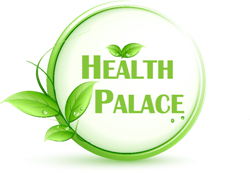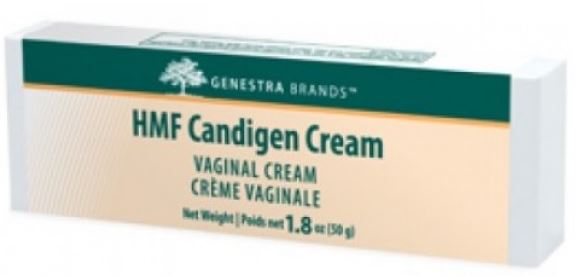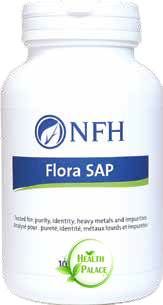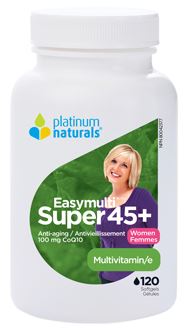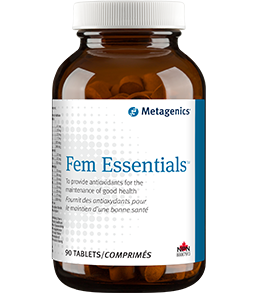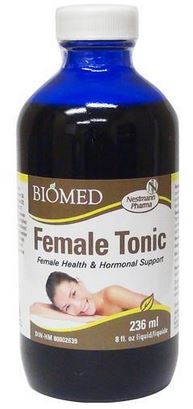Benefits of Hypoallergenic Feminine Hygiene Products & The Risks of Toxic Chemicals in Feminine Hygiene Products

Toxins in Feminine Hygiene Products Increase Risks of Serious
Health Issues in Women.

The overall purpose of using feminine care products is to clean, moisturize, absorb discharges, and provide treatment for sensitive tissues of the female parts. These widely used items are including; tampons, pads, feminine wipes, feminine washes, feminine deodorants, and feminine anti itch creams. This article explores a number of chemicals found in feminine products and that how they are posing risk of serious illnesses to women.
How Feminine Products Are Affecting Women's Health?
Female parts are made up of mucosal tissue without protection of usual skin. Vaginal tissue contains of many blood and lymphatic vessels allowing quick and direct transfer of chemicals and medicines to the circulation. For example, the vaginally applied dose of Estradiol (estrogen) impacts the blood level of this hormone 10 to 80 times more than oral version of the same dose. Therefore, similarly vaginal exposure to any hormone like chemicals or toxins will have a greater impact on the body than what is considered safe level under normal conditions such exposure from food or skin care products.
Do We Know What Is In The Feminine Hygiene Products?
Despite the fact that we know chemicals are absorbed easily though vaginal exposure and distribute readily throughout the body, unfortunately, there is no or very little research done related to the impacts of the chemicals found in feminine products. Furthermore, when it comes to regulations the feminine product are categorized under cosmetics, medical devices, and over the counter medication.
Based on the FDA's statement: "Companies and individuals who manufacture or market cosmetics have a legal responsibility to ensure the safety of their products. Neither the law nor FDA regulations require specific tests to demonstrate the safety of individual products or ingredients. The law also does not require cosmetic companies to share their safety information with FDA.”
Feminine items like tampons and pads are considered medical device; and unlike the cosmetics it is not required that manufacturers to disclose the list of the ingredients or chemicals used to manufacture them to the public.
Anti itch cream and similar products are considered over the counter and only the safety of the active ingredients are reviewed which means the non medicinal ingredients are not reviewed for their safety.
Do Feminine Hygiene Products Contain Toxic Ingredients?!
Tampons are known to be very simple made from cotton, rayon, viscose, cellulose, wood fluff, or other pulp fibers. However these ingredients are highly bleached with chemicals and plants which they are sourced from are exposed to many chemicals and pesticides. Third party test results found dioxins, furans, and residues of pesticides in tampons. FDA guide lines suggest that the tampons to be free from Diaxin TCDD and TCDF and any pesticide but this recommendation is not mandatory.
Third party testing results was negative for TCDD but positive for Dioxin TCDF, other types of Diaxins, and furans in all four different marketed brands of products. The study further suggests that the health risks of the exposure to such chemicals is 100 to 1000 times higher from tampons compared to food and other environmental exposures.
Extra clean white look of the tampons and pads is because of the usage of chlorine bleach, which can create toxic dioxin and other by products. Studies show the dioxin accumulates in the fatty tissues. The US Environmental Protection Agency suggests that dioxin is a serious public health concern and there is no safe lave of exposure limit for it. Published reports have linked minimal amount of dioxin to abnormal tissue growth in abdominal and pelvic areas, abnormal cell growth, suppressed immune system, and hormonal imbalance.

Another study conducted testing for pesticides on one brand of tampon and found positive amounts of Dichlofluanid, Fensulfothion, Malaoxan & Malathion, Methidathion, Mecarbam, Piperonyl Butoxide, Procymidone, and Pyrethrum. Even though the amount of each pesticide was very little, it was against the FDA recommendation of tampons to be free of pesticides.
Fragranced tampons are source of another risk of exposure to unknown chemicals. One fragrance can be made from up to 3000 different compounds, and the manufactures do not provide the formula or the compounds that they use to make it. Based on the ingredients' list provided by International Fragrance Association, a fragrance can contain allergens, carcinogens and estrogen like compounds.
The same issues are associated with pads. Pads and the chemical compounds in them are often found to be the reason for rash, allergies, skin irritations, dermatitis. A small study found patients who complained from symptoms of itching and burning were using a particular brand of pad and when they stopped using that brand the symptoms went away.
Feminine wipes usually contain variety of preservatives and fragrance. All of those preservatives are known as allergens causing dermatitis, itching, and burning sensations. Studies show Parabens and Formaldehyde from wipes are linked to increase risk of cancer. As we know Parabens are estrogen like toxins that are detected in some types of breast cancer and could be found in vaginal creams, and feminine washes as well.
Feminine washes are often contain certain dyes such as D& C Red #33 or Violet #2 which supposed to be for external use only. FDA 's explanation of external use is" Does not apply to the lips, or any body surface covered by mucus membrane. For instance, if a color additive is approved for use in externally applied cosmetics, you may not use it in products such as lipsticks unless the regulation specifically permits this use".
Vaginitis is one of the very common issues for women, and that means more likely women use anti itch over counter creams for treating the irritating symptoms of itching and burning. However, often over the counter anti Itch creams contain allergens which actually could contribute to more discomfort. Benzocaine is one of the ingredients used in anti itch creams which temporarily will numb the area but it can cause skin irritation and allergy, so when the numbing effect is gone the problem returns with more irritation. In addition, some over the counter anti itch creams also contain parabens and fragrance just adding to the problem.
What Are the Safer Alternative Options for Feminine Products?
The best is to reduce vaginal usage of unnecessary items that are marketed to women such as vaginal washes and just keep the usual routine good hygiene practice. Vaginal washes actually change the Ph and alter the population of vaginal normal flora. Frequent usage of vaginal wash and douche increases the possibility of vaginal infections and irritation.
Switch to the hypoallergenic brands, those using clean sources, avoiding harmful bleach and fragrance for their products, and providing list of ingredients that they use to make their products. Chlorine free organic cotton tampons and pads, washable pads ,and menstrual cup are the safe alternatives.
Get to know the underlying cause of the vaginal irritations and frequent vaginal infections, rather than using an easy fix like over the counter anti itch creams. For maintenance is recommended to use the natural based creams or suppositories with probiotics.
Be Aware of Marketing Traps:
Some bands on the package state "Elemental Chlorine Free Bleaching" which means they have not used chlorine gas bleaching process, but it does not mean it is Chlorine free, as they often use other types of chlorine in the bleaching process.
Hygiene products made from recycled cotton or other fabrics are not making the products any better, as it does not mean that they are free from pesticides and diaxin.
Articles and products featured by Health Palace are collected from a variety of sources and are provided as a service by Health Palace. These newsletters, while of potential interest to readers, do not necessarily represent the opinions nor constitute the advice of Health Palace. Presented materials are only for information purposes and do not intent to treat, cure, or prevent any disease.
Select References:
1.Farage,M and Maibach,HI. (2004) The vulvar epithelium differs from the skin: implications for coetaneous testing to address topical vulvar exposures. Contact Dermatitis.Vol. 51,pp:201-209,2004.
2.U.S.Food and Drug Administration (FDA) (2005) "FDA Authority Over Cosmetics." Center for Food Safety and Applied Nutrition/Office of Cosmetics and Colors.March 3,2005;updated August 3, 2013.Available at: www.fda.gov/cosmetics/ guidancecomplianceregulatoryinformation/ ucm074162.hbn
3.U.S.Food and Drug Administration (2012) Drug Applications for Over-the Counter (OTC) Drugs. Page Last Updated: 10/18/2012. Available at: www.fda.gov/ drugs!deyelopmentapprovalprocess/ howdrugsaredevelopedandapproved/ approvalapplications/over-the counterdrup!default.htm
4.Costin,GE, Raabe, HA,Priston,R, Evans,E and Curren,RD.(2011) Vaginal Irritation Models:The Current Status of Available Alternatives and In Vitro Tests. Alternatives to Laboratory Animals.Vol. 39, pp:317-337. 2011.
5.Hussain,A and Ahsan, F. (2005) The vagina as a route for systemic drug delivery. Journal of Controlled Release.Vol. 103,pp: 301-313.2005.
6.NationalAcademy of Sciences (2010) Women's Health Research: Progress,Pitfalls and Promise. Committee of Women's Health Research,Institute of Medicine of the National Academies. National Academies Press. Washington DC. 2010.
7.US Department of Health and Human Services (2012) Vaginal and Vulvar Cancer: Inside Knowledge Get the Facts about Gynecologic Cancer.CDC Publication #99- 9126,July 2012.Available at: www.cdc. DV/cancer/vapulv/pdftvagyulv facts.pdf
8.Mayo Clinic (2013)Vaginal Cancer Causes.Available at: www.mayodinic. com/healthlvaginalcancer/DS00812/ DSECTION-causes
9.American Public Health Association (APHA) (2007) Vaginal Douching and Adverse Health Outcomes,Policy# 20074, November 6,2007.
10.Cottrell,B. H.(2010). An updated review of evidence to discourage douching. The American Journal of Maternal Child Nursing.Vol. 35, No.2,pp:102-107.March/ April2010.
11.American Public Health Association (APHA) (2007) Vaginal Douching and Adverse Health Outcomes,Policy# 20074, November 6, 2007.
12.Ott. MA, Ofner,S and Fortenberry, JD (2009) Beyond Douching:Use of Feminine Hygiene Products and STI Risk among Young Women.journal of Sexual Medicine. Vol. 6,pp:1335-1340. 2009.
13.Chandra A,Martinez GM,Mosher WD,Abma JC, jones j. (2005) Fertility, family planning, and reproductive health of U.S. women:Data from the 2002 National Survey of Family Growth. National Center for Health Statistics. Vital Health Stat 23(25). 2005.
14.DeVito,MJ and Schecter,A. (2002) Exposure assessment to dioxins from the use of tampons and diapers. Environmental Health Perspectives,Vol. 110,No.1,pp:23- 28.Jan. 2002.
15.Naturally Savvy (2013).www.naturallysavvy.com
16.US Environmental Protection Agency (EPA) (2012) Chemicals Evaluated for Carcinogenic Potential. Office of Pesticide Programs,US EPA. November 2012. Available at:npic.orst.edulchemicals evaluated.pdf
17.Pesticide Action Network (2013) PAN Pesticide Database.Available at: www. pesticideinfo.org
18.International Fragrance Association (IFRA) (2013) IFRA Survey:Transparency List. Available at: www.ifraorg.org/en-us/ ingredients
19.Larsen,WG (1979) Sanitary napkin dermatitis due to the perfume. Archives of Dermatology.Vol. 115,pp: 363.March 1979.
20.Eason, EL (1996) Contact dermatitis associated with the use of Always sanitary napkins. Canadian MedicalAssociation Journal. Vol. 154. No.8,pp: 1173-1176. April15,1996.
21.Wujanto, L. and Wake!in, S. (2012) Allergic contact dermatitis to colophonium in a sanitary pad-an overlooked allergen? Contact Dermatitis. Vol. 66 pp. 159-162.2012.
22.Williams,JD, Frowen,KE and Nixon, RL (2007) Allergic contact dermatitis from methyldibromo glutaronitrile in a sanitary pad and review of Australian clinic data. Contact Dermatitis.Vol 56,pp: 164-167. 2007
23.Bauer,A,Geier,J and Elsner,P.(2000) Allergic Contact Dermatitis in Patients with Anogenital Complaints.The Journalof Reproductive Medicine.Vol. 45,No.8, pp:649-654.August 2000.
24.Travassos,A.R., Claes, L.,Boey,L., Drieghe,J.and Goossens,A.(2011) Non fragrance allergens in specific cosmetic products. Contact Dermatitis.Vol. 65,pp:276-285. 2011
25.Gardner,KH,Davis,MDP, Richardson, DM and Pittelkow,MR.(2010)The Hazards of MoistToilet Paper:Allergy to the Preservative Methylchloroisothiazolinon Methylisothiazolinone.Archives of Dermatology. Vol. 146,No. 8,pp:886-890. August 2010.
26.Calafat,AM,Ye, X,Wong, LY, Bishop, AM and Needham,LL. (2010) Urinary concentrations of four parabens in the US population:NHANES 2005-2006.
27.Environmental Health Perspectives.Vol.118, No.5,pp: 679-685.May 2010.
28.Smith,KW, Souter,I,Ehrlich,S,
29.Williams,PL, Calafat,AM and Hauser,R. (2013) Urinary paraben concentrations and ovarian aging among women from a fertility center. Environmental Health Perspectives. (Epub ahead of print) August 2, 2013
30.www.hc-sc.gc.ca/cps- pc/cosmet personlindustlhot-list-critique/hotlist-liste eng.php#B
31.Angotti,LB,Lambert, LC and Soper, DE. (2007) Vaginitis:Making sense of over the-counter treatment options. Infectious Diseases in Obstetrics and Gynecology.Vol.2007,Article ID 97424.
32.Wilson, C (2005) Recurrent vulvovaginitis candidiasis:an overview of traditional and alternative therapies. Advance for Nurse Practitioners,Vol. 13, No.5,pp.24--29,2005.
33.https://www.epa.gov/dioxin
34.Conventional Feminine Care Products: A Women’s Issue With Toxic Implications
35.Synthetic blend cheaper to produce: http://www.motherjones.com/blue-marble/2010/10/wh...
36.Blend has higher capacity to absorb liquid than cotton: www.theecologist.org/green_green_living/behind_th...
37.Pesticides used on cotton crops: "Cotton - the crop and its pesticides market," Pesticides
38.State of the art testing detects dioxins in tampons: http://www.fda.gov/MedicalDevices/Safety/Alertsan...
39.Chemical soup, birth defects: http://www.ewg.org/skindeep/ingredient/705315/PRO...
40.Chemical soup, skin irritation: http://www.ecologycenter.org/factsheets/plastiche...
| Genestra HMF CandiGen 6 Ovules |
Genestra HMF Candigen Cream 50 Tube |
||||||||
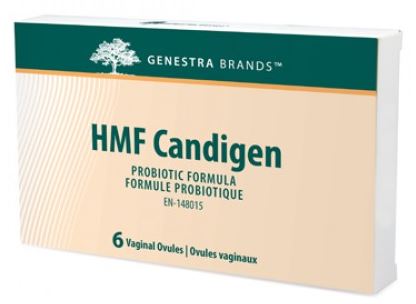 HMF Candigen is presented as vaginal ovules which provide two strains of Lactobacillus. For maximum benefits, HMF Candigen should be used along with HMF Candigen Cream. ...Read more |
PROBIOTIC CREAM • Provides 100 milllion CFU per gram • Includes garlic powder and Rosa damascena flower oil ...Read more |
Genitourinary infections affect more than 1 billion women worldwide every year and are the most common reason a women will see a gynecologist. These infections can be bacterial in nature (called bacterial vaginosis) or fungal in nature (called vulvovaginal candidiasis)... |
|||||||
|
|
|
|
|
|
|||||
|
|
|
|
|||||||
Platinum Naturals Super Easymulti For Women 45 Plus 120 Softgels. |
Metagenics Fem Essentials 90 Tablets |
Biomed Female Tonic 236 Ml |
|
||||||
|
Cell degeneration from free radical damage causes eyesight, hearing and memory to diminish as you age. It can also impair your immune system and lower your resistance to illness and infection...Read more |
To provide nutritional factors and antioxidants to help maintain good health, support healthy bones, and help maintain proper muscle function. ...Read more |
Female Tonic is a homeopathic preparation formulated for the restoration of hormonal balance in women. It is used as a supportive remedy for physical and mental exhaustion; sleeplessness... |
|||||||
|
|
|
Recent Posts
-
Maintain A Healthy Heart Rhythm With Integrative Medicine
Maintain A Healthy Heart Rhythm With Integrative Medicine;Usually, abnormal heart rate or arrhythmi …4th Feb 2021 -
How To Protect Against COVID-19
Coronaviruses are a large group of viruses that cause many common human and animal infections. In hu …30th Jun 2020 -
How to Prevent Gallstones from Forming? | Natural Supplements for Gallstones
How To Prevent Gallstone Formation?Gallstones are hard deposits made of cholesterol or bilirubin f …4th Mar 2020
